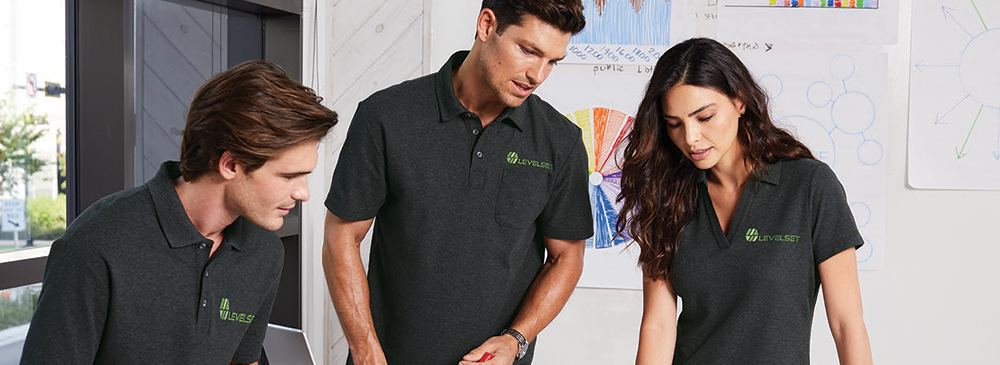What is sustainability? We hear the word often but hearing it doesn’t always equate to understanding it and how it relates to the work we do every day.
With that in mind, here are a few ideas to get you started as you figure out what sustainability means to you and your customers. At SanMar we say that discovering the best sustainable solutions for your business is not really a destination you’ll reach or a box you can check. Instead, it’s a journey of continuous improvement taken in collaboration with your customers and the end users of your product, with your shared commitment to being good stewards of the world we share in mind.
An industry as large and diverse in product offerings as ours has to tackle this question thoughtfully. The potential for exaggeration and misdirection (AKA greenwashing) is plentiful, and often makes it difficult to understand the reality behind the message.
For screen printers, just the “poly ink versus water-based ink” discussion can create hours of dialogue around environmental impacts and what is being measured when assessing the practices.
There isn’t a perfect blueprint on how to be sustainable today, as the industry hasn’t yet defined a standard when decorating products. Each region and community has unique standards and every project may look a little different.
These are some considerations you should work through with your customers before you make any decisions about artwork, the product being decorated or decoration methods, to make sure everyone is on the same page when it comes to sustainability.

- Raw Material Selection: Choosing raw materials that are responsibly sourced and have a lower environmental impact is the first step towards responsible decoration of apparel. Sustainable materials such as recycled cotton, recycled polyester (rPET), responsibly-forested modal (beechwood) and hemp often require less water and energy during production. Here are some products to look for:
- Water Conservation: Water conservation is essential in the textile industry as it requires a high volume of water to dye and process fabrics. Embroidery, screen print, heat press, and direct to garment techniques use water in different stages. Using low water or water-free processes can significantly reduce water usage during the decoration process. Automatic screen reclaim/washers from these providers can help: InPro, Eco-Tex, SPSI, Lotus Holland
- Chemical Management: The textile industry uses a range of chemicals that are harmful to the environment, such as dyes, bleaches, and solvents. Choosing decoration techniques that use fewer chemicals or incorporating alternatives that have been screened or certified can reduce potential negative impact on the environment. Both ink choice and transfer film options can contribute to more responsible chemical usage:
- Inks: Soy Based Inks, Stahls, STS Inks, Avient
- Transfers/Films: Eco-Solvent Ink Transfers, CFP flex, Stahls, Nazdar
- Waste Management: Waste management is a critical aspect of environmental sustainability. Decorators should strive to minimize waste by choosing the right equipment and processes that produce less waste. Recycling and repurposing materials generated during the decoration process is also a viable option. Water filtration products for wash-outs can also help to reduce waste: Sgreen, Rhino Tech, HE Hydro
- Energy Efficiency: Decorators can improve energy efficiency by using machinery that consumes less electricity, optimizing production processes to reduce energy waste, and switching to renewable energy sources such as solar and wind.
Adopting practices such as selecting sustainable raw materials, conserving water, managing chemicals, reducing waste and improving energy efficiency can go a long way in minimizing environmental impact during the decoration process. These practices enable your team to offer a complete package to meet an end users desire for a product that matches their corporate ethos.
As you review your current methods internally, it would be valuable to create an elevator pitch showcasing the efforts your team are practicing. Remember to consult regularly with your customers and come to a shared understanding of your end user’s needs and expectations regarding sustainable products.
Another thing we often say here at SanMar — this is not a journey you can take alone. The work of becoming more sustainable is work that is best done one way: together.
